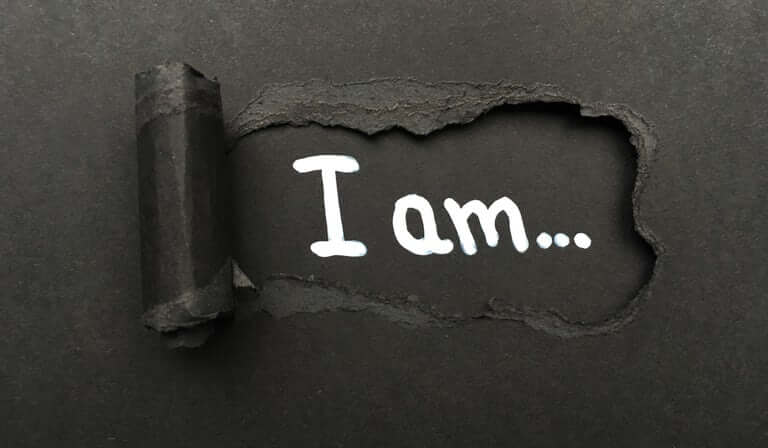First person, second thoughts
There’s no ‘I’ in brand.
No, this isn’t going to be one of those pieces that excoriates individualism in marketing departments and castigates those who step out of the consensus culture with a version of the ‘no-I-in-team’ put-down. Brands can be built either way: in harmonious, consensual togetherness or by brilliantly ruthless lightning strikes of personal genius.
Who would argue that Steve Jobs was not the ‘I’ in Apple, at least until Jony Ive came along and made it a ‘we’? And eponymous, founder-led brands would never get off the ground without the impassioned, often monomaniacal, zeal of the pioneer with their name over the door. From the outset, and for decades after, there was an ‘I’ in Ford and his name was Henry Ford.
But we’re going to come down a few levels from the elevated dichotomies of that subject matter. Many levels, in fact, to the subterranean zones of the branding edifice, to consider a communications trope that would be an unlikely contender for serious marketing comment were it not so very annoying and pervasive.
That trope is ‘I am’ branding, where products deploy the first-person singular to declare their benefits and virtues. ‘I am a green bus’, says the side panel on a passing bus. Why not ‘This is a green bus’, or ‘Get on board our new green buses’, or ‘Look! This bus has gone green’? Why ‘I’? It’s infantilising – a copywriting language straight out of the pages of Thomas the Tank Engine.
And it’s everywhere. On the wrapper of a peanut butter bar: ‘Ta-da! I am one third of your daily fibre fix.’ On a range of cleaning products: ‘I’ll do your dirty work,’ claims one; ‘I’ll give you some sparkle,’ boasts another. On the website of a big-brand sofa retailer that gives its products personal names: ‘Hi! I’m Bluebell.’ Or Isaac. Or Jack.

Taking things to another excruciating level of informality is the message on the brown wrapper of a big block of ice that comes with a recipe box delivery. ‘Ciao!’ it starts breezily, as though it made my acquaintance way back when we were both students at uni. ‘I am an icepack. Don’t worry if I have melted by the time you receive your food. I have used all my energy keeping your food chilled during the trip.’
‘You what?’ I want to say back. ‘You’re just a sodden lump of frozen H2O that’s now oozing in my sink’ – before realising that I have fallen into the trap and dignified an inanimate object with the second-person singular.
And that gets me wondering what these brands’ preferred pronouns are. We do not habitually refer to those who introduce themselves with ‘I’ as ‘it’ further down the conversation. So, is the bus/bar/sofa/icepack a she/her/he/him/they/them or what?
The ‘first-person’ trope is merely the latest expression of what Wieden & Kennedy Amsterdam’s head of strategy, Martin Weigel, has bewailed as “the mind-numbing, unrelenting chattiness of consumerism”. In a tweet devoted to that gripe he focused on some Innocent-inspired back-of-pack copy for a shampoo that talked about how ‘your hair is your friend’.
Perhaps I should take a cue from the ever-thoughtful Weigel to make a serious marketing point here. Before mandating a ‘friendly’ tone of voice for your brand, check if it is really what you want – or whether you’re ready for what you’ll end up with once the agency has put its stamp on it. Not everyone wants their brands to be their friends. In fact, does anyone, ever? What if your brand’s gravitas, authority, reputation – or its very category – precludes that level of presumptive chumminess?
As a precautionary tale here, I offer an example from the serious, often life-and-death world of medical devices. A brand that makes probes that go into the groin and up through the vascular system to locate, and hopefully withdraw, stroke-inducing clots deep in the brain addresses surgeons thus:
‘I am a balloon guide catheter specifically designed for stroke patients. Before I came along, balloon-based variable stiffness catheters brought all manner of technological constraints. I’m here to change that. With my kink-resistant construction, I can shimmy and twist through the most challenging of neurovascular procedures.’
This puts me in mind of those books that you got in junior school that started: ‘I am John’s liver’ and continued from there to tell the tale of all the clever things that particular organ got up to in a typical day. They were a brilliant way of giving you the basics of what the various bits of the body were there to do.
But do you know why that worked so well? Because you were seven. Brain surgeons, conversely, have moved on from junior school to big school to medical school to teaching hospital, and from there to hone their specialist skills in life-critical surgical practice. They might, just maybe, be ready for something a little more – I don’t know – sophisticated.
Another reason for marketer caution is a more fundamental one. Brands are supposed to stand out. They are meant to be different from the others in the category. To have their own distinctive way of being, feeling and communicating. Unless those tonal values, those distinctive brand codes and cues, are very clearly mandated on any design or communications brief, there is a good chance you will end up as a victim of fashion.
And right now, the fashion is to come the big ‘I am’. Should you find yourself on the receiving end of a version of that, my advice is to run a mile. As ever when there is a rush for the cover of cleverness or cuteness or zeitgeisty modes of engaging with consumers, the soundest tactic is to go the other way, keep improving the substantive features of the product and service offer, and communicate with genuine, rather than ersatz, empathy and perhaps a little humility too. Is everyone out there up for that? I know I am.
